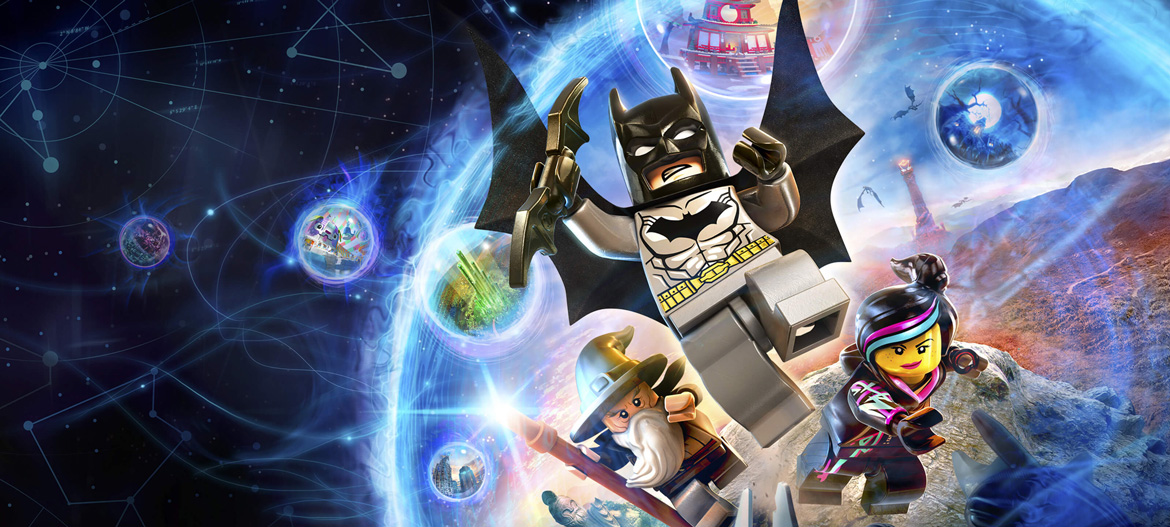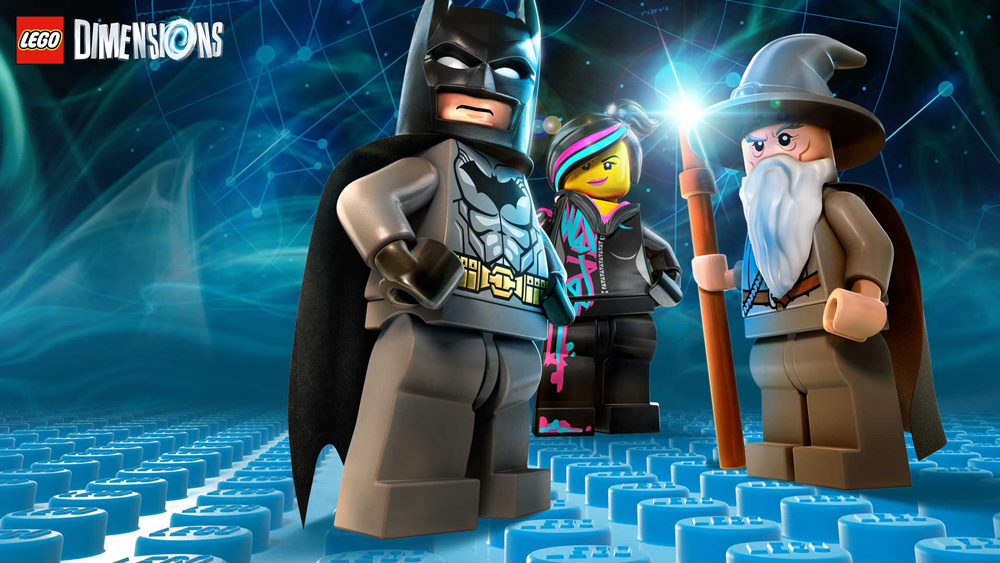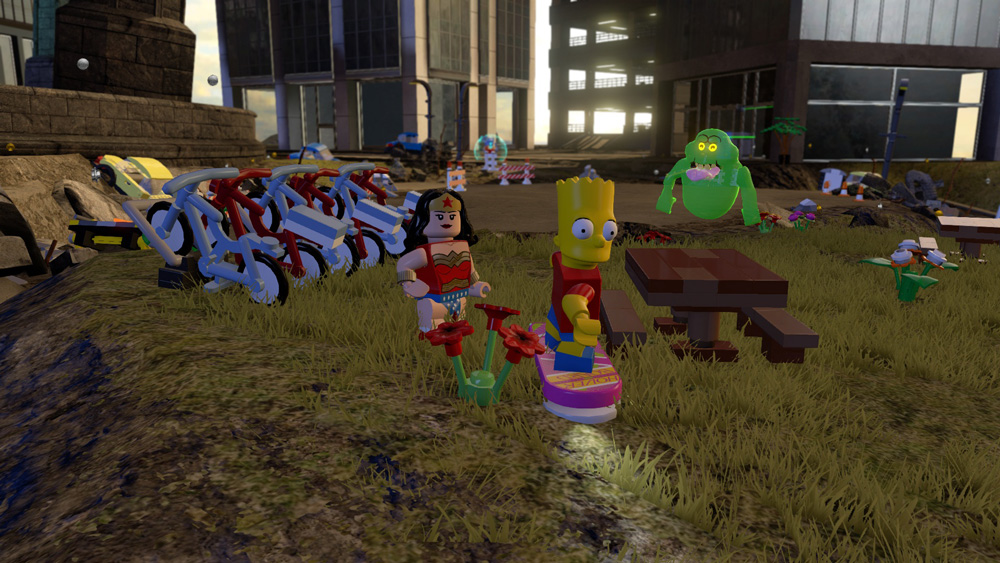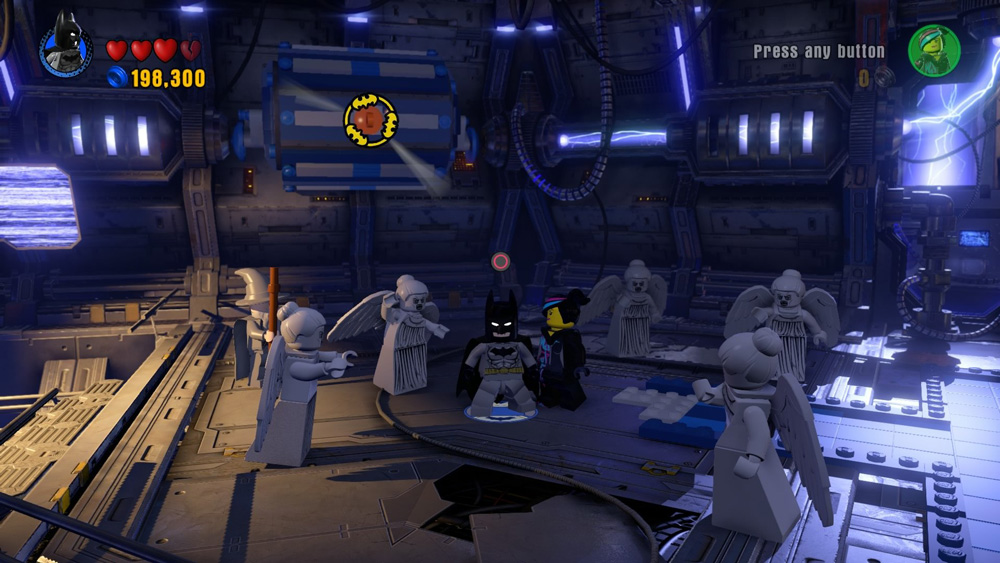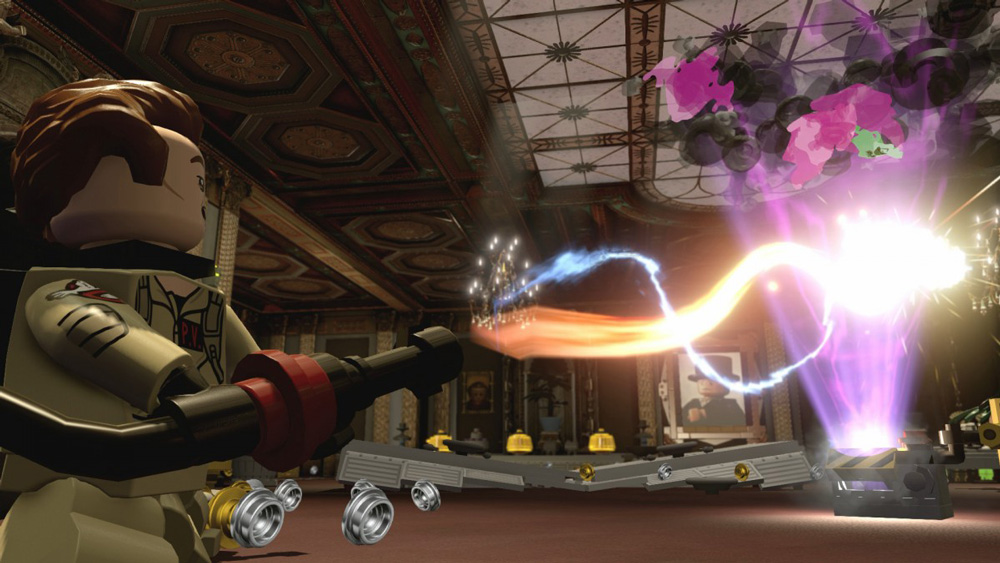TL;DR
LEGO Dimensions enters the toys-to-life arena by cleverly learning from past mistakes. It blends the beloved LEGO building experience with a vast array of IPs, offering a charming adventure with humor that appeals to both kids and adults. Players can physically build LEGO creations that translate directly into in-game actions, and the portal's multi-figure support enhances gameplay. While the main adventure is a high point, the game's impressive breadth of content comes with a significant price tag. Discover if the fun and cross-universe charm are worth the investment in our full review.
LEGO and WB Games have entered the toys-to-life market with LEGO Dimensions. The key question is: does it bring a fresh perspective to the genre?
The toys-to-life concept is undeniably lucrative. While pinpointing its exact origin is difficult, Skylanders clearly established itself as a dominant force early on. (Notably, Nintendo reportedly declined a collaboration proposal, a decision that has subsequently generated billions for Activision). Nintendo has since entered the space with its amiibo figures, which offer support in select games and have achieved considerable sales globally, although some users await more dedicated Wii U titles. Disney recently discontinued its three-year venture, Disney Infinity. Despite access to a rich library of IPs like Star Wars, it faltered due to two critical shortcomings: 1) a lack of compelling adventures. The expensive figures primarily unlocked a Toy Box mode, appealing mainly to younger audiences and collectors. 2) a restriction that prevented cross-pollination of characters and genres – preventing a classic Disney character, like Donald Duck, from participating in a Marvel adventure, and vice versa. This proved to be a significant misstep.
LEGO Dimensions appears to have learned from these challenges. It effectively combines several appealing elements: 1) the core LEGO building experience 2) access to established brands (including Disney’s Star Wars, potentially expanding following Infinity’s closure) 3) a world designed to entertain both younger and older players. Viewers of LEGO: The Movie will recognize this approach. The game features comedic antics and mild action suitable for children, alongside more sophisticated humor and references to movies and popular culture that resonate with older players, without detracting from the experience for younger audiences.
The starter pack includes an eclectic trio of figures: Gandalf (from Lord of the Rings, published by New Line – a Warner company), Batman (DC Comics, owned by WB), and Wildstyle (from LEGO: The Movie). This unlikely group embarks on an adventure that spans various dimensions and LEGO worlds, from The Wizard of Oz to The Simpsons and Scooby-Doo. Optional challenges and side quests require purchasing additional figures with specific abilities (akin to the elemental system in Skylanders). However, a compromise is offered: these abilities can be “rented” for 30 seconds at a cost of 50,000 LEGO coins. While acquiring additional figures is necessary to collect all 480 golden LEGO bricks, the rental system is a welcome addition. Beyond individual figures, standalone adventures are available, such as the Ghostbusters pack (detailed below).
LEGO Dimensions offers an accessible entry point, and a notable feature is the portal that accommodates up to seven figures (and their vehicles) simultaneously. This facilitates gameplay with multiple characters and quick switching between their unique abilities. The platform is also integrated into puzzle mechanics, requiring players to position figures in specific sectors. While not revolutionary, this adds a novel element to the gameplay.
The main adventure is exceptionally well-crafted: varied, visually appealing, and featuring original music from the respective films, as well as, where possible, the original English voice actors (including Sir Ian McKellen as LEGO Gandalf). Game mechanics are diverse, encompassing both classic platforming and aerial sequences. The engaging scenery and humor sustained our interest for an extended period. Upon completing a world, players can freely explore it, tackling side quests and discovering Golden Lego bricks. While this open sandbox environment may not be as compelling as the main adventure, it extends the overall gameplay experience.
True to the LEGO brand, physical building is integrated into the game. Periodically, gameplay pauses to prompt players to rebuild Batman’s Batmobile into a new configuration or construct a cosmic portal. Clear instructions evoke the nostalgic experience of building LEGO creations from manuals, enhanced by the digital integration that continues the adventure within the game.
As mentioned, the main adventure provides a high benchmark for the genre. Cooperative play via split-screen is supported, though it can be more challenging compared to alternating turns and collaborating on solutions. We also explored the Ghostbusters package (based on the original film; a version based on the 2016 film is also forthcoming), featuring Peter Venkman (Bill Murray), the Ecto-1 vehicle, and an adventure based on the 1984 film. Familiar sequences such as catching Slimer (also available as a figure) and the final battle against the Stay Puft Marshmallow Man offer additional enjoyment. However, it lacks the overall variety and humor present in the main game. We anticipate sharing our thoughts on future LEGO Dimensions adventures on senses.se.
Overall, LEGO Dimensions is a well-executed concept and a worthwhile investment by WB and TT Games. The major drawback is the cost associated with fully experiencing the game. The starter pack retails for approximately 600 SEK, level packs (containing figures and new adventures; 15 available at the time of writing) cost around 400 SEK each, and individual figures (often sold in pairs or with weapons; currently totaling 60) are priced at approximately 200 SEK. Acquiring all available content represents a significant investment. Fortunately, owning every figure is not necessary to solve all puzzles (one of each special ability is sufficient). Our future reviews will guide investment decisions, highlighting worthwhile purchases and content that can be skipped or acquired during sales.
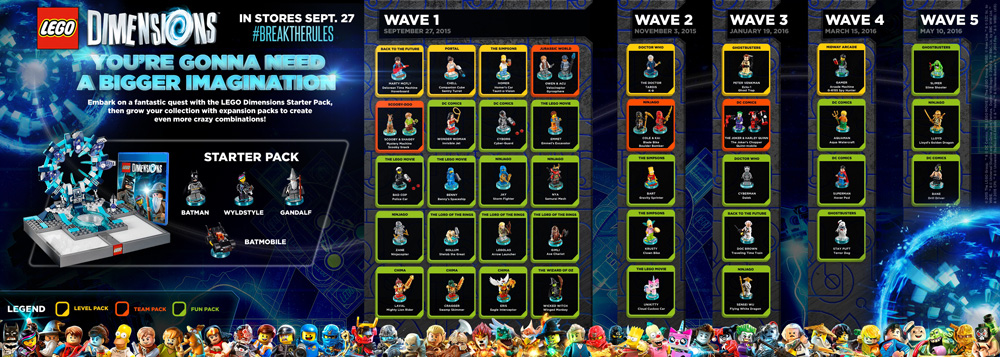
“You’re gonna need a bigger imagination” – and a larger budget if you intend to experience everything LEGO Dimensions has to offer.
In conclusion, for those with an interest in engaging adventures, children, or playmates who enjoy LEGO building, LEGO Dimensions is a worthwhile game investment.
